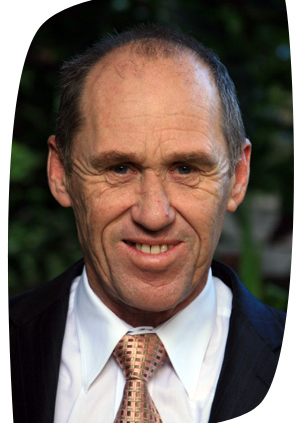Steve Killelea
 My name is Steve Killelea. I created the Global Peace Index to provide a way to measure and better understand peace. I am the Face of Peace.
My name is Steve Killelea. I created the Global Peace Index to provide a way to measure and better understand peace. I am the Face of Peace.
So what creates peace? How well do we understand it and how can we measure it?
I first got involved in developmental aid nearly 20 years ago after establishing a family foundation. As the charity works with the poorest of the poor, I spent a lot of time in areas of the world ridden by conflict. In 2006, I was in the Eastern Congo and wondered which nations in the world were the most peaceful. What could we learn from them that could be adapted to the countries where I was working? To my shock, I could not find a ranking of the nations of the world by their peacefulness.
That is how the Global Peace Index (GPI) was born.
“Peace is measurable, peace is possible, and peace is valuable.”
This poses a basic question. If a simple businessman can be wandering through Africa and wonder what the most peaceful nations are and cannot find the answer, then how well do we really understand peace? Most of the study of peace is in fact the study of violent conflict. Although there are Peace and Conflict centers in many universities around the world, peace still lies on the margins of academia. There is currently no chair in the world on Peace Economics, yet most businesspeople believe that their markets improve and costs fall with increasing peacefulness. Similarly, the literature departments of major universities do not include courses on the literature of peace, yet most people have been profoundly moved by writings on peace.
Today, the Global Peace Index provides an annual quantitative measure of the peacefulness of more than 150 countries and identifies the potential factors – or drivers – that create and sustain peace.
In business, it is said that you get what you measure. This means that in order to understand something, it must be measured, because it is only then that you can determine whether the actions you have taken are helping or hindering you in achieving your goals.
The GPI has become the leading international measure of peacefulness, and contributes significantly to the global debate on peace. It has also spawned a series of national peace indices, beginning with the United States Peace Index, which ranks their 50 states.
These indices are both resources that provide evidence for practitioners and policy-makers, as well as being powerful tools that promote peace and prosperity, helping to demonstrate the positive impact of peace on human development, sustainability, and economic gain. These gains are massive. GPI-based research through the Institute for Economics and Peace show that if the world had been 25% more peaceful over the past five years, the global economy would have benefited from an additional $9.4 trillion. Imagine the opportunities.
Even more broadly, humanity will not be able to address the challenges we face today without peace. Climate change, lack of fresh water, food insecurity, and overpopulation will require global solutions that depend on unprecedented cooperation. Greater levels of peace are essential to implementing policies and practices that will enable us live sustainably on this planet. Indeed, peace is the prerequisite for survival of society as we know it in the 21st century.
Peace is measurable, peace is possible, and peace is valuable.
You can explore the Global and United States Peace Index data and maps at http://www.visionofhumanity.org and follow our progress on twitter:@GlobPeaceIndex and facebook.com/GlobalPeaceIndex.






Leave a Reply
Want to join the discussion?Feel free to contribute!